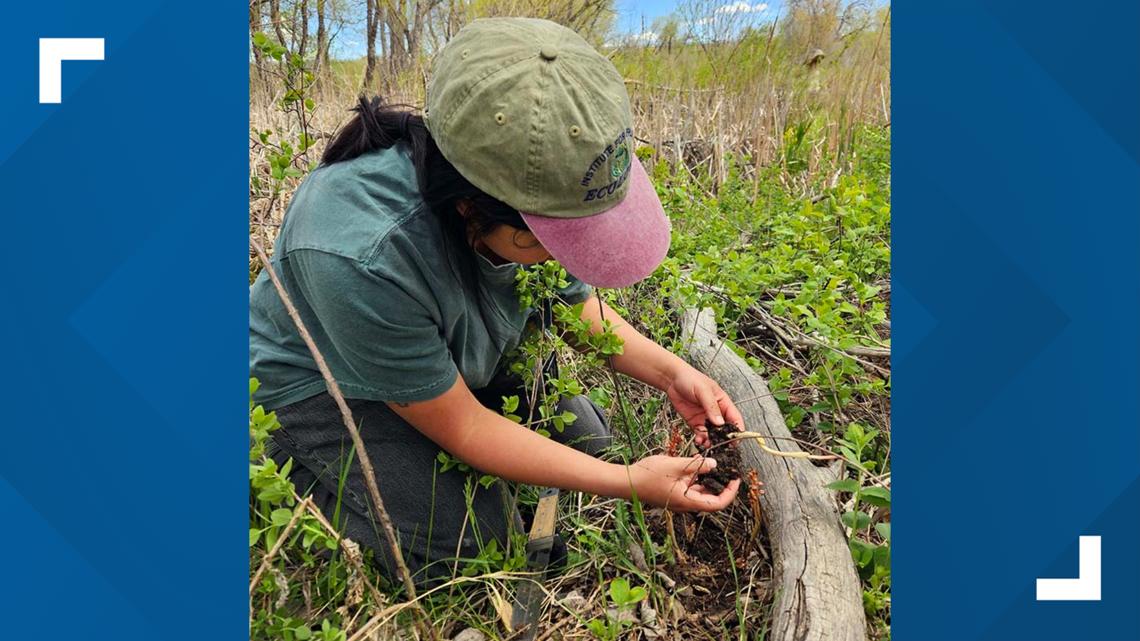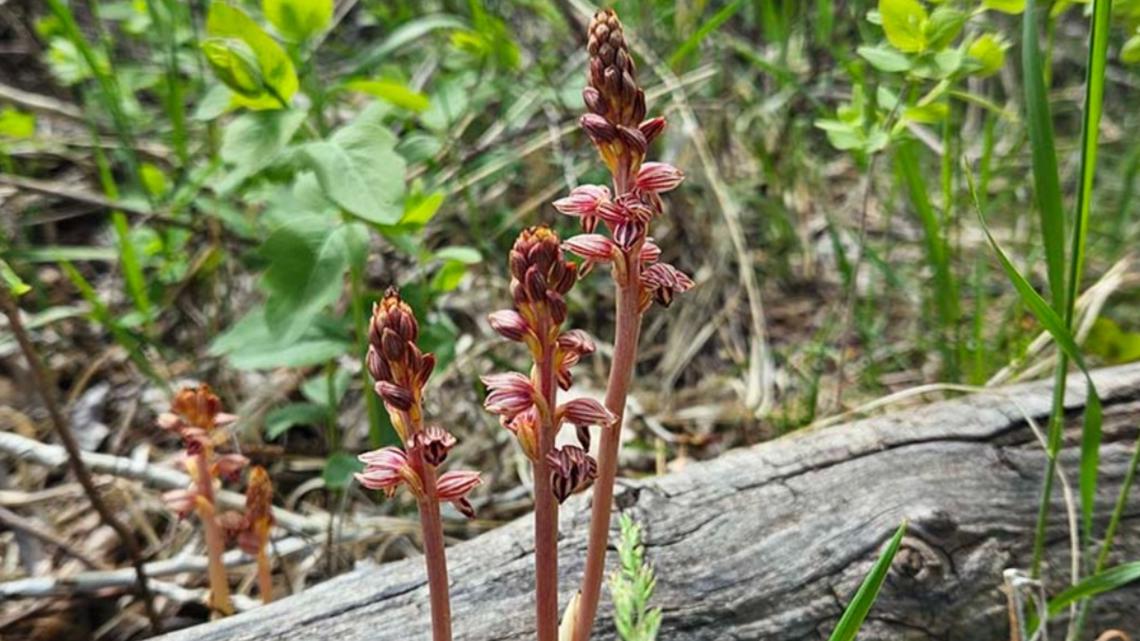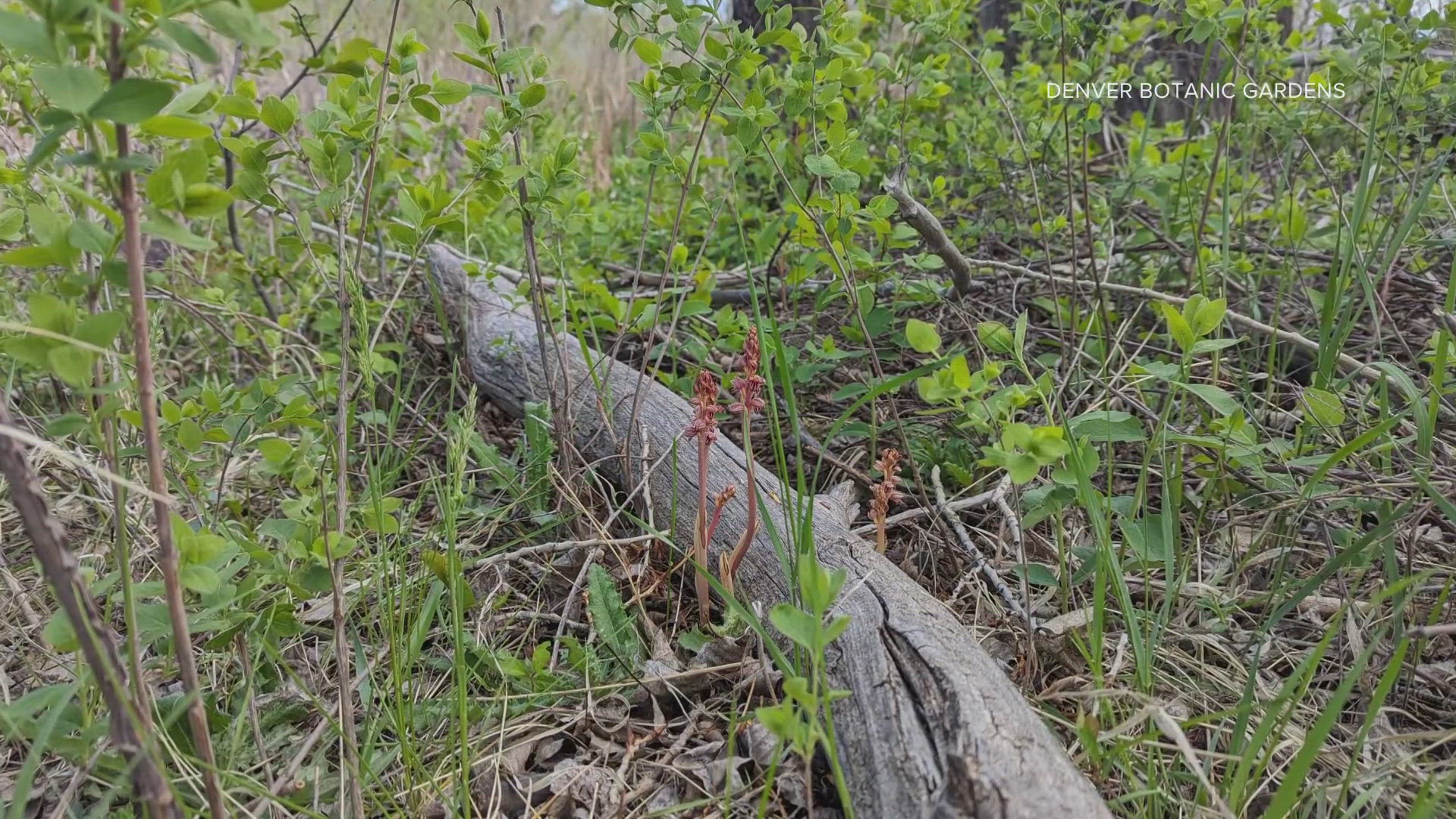LITTLETON, Colo. — A rare striped coralroot orchid has been found at Denver Botanic Gardens' Chatfield Farms.
The discovery was made in late April when My-Lan Le, a graduate botany research assistant, and Rebecca Hufft, associate director of applied conservation, noticed it growing next to a log.


Striped coralroot orchids are native to parts of Canada, the United States and Mexico, but they are a rare find for Colorado. The flower has never been recorded at Chatfield Farms, but now, Le and Hufft say that there are several of them in the area.
"This finding is so exciting because even at a location that we have been working at for over 40 years, we still can find something new that has likely been under our noses this whole time,” Hufft said. “This is a good reminder of how important natural history is and for each of us to keep taking the time to observe nature where we work and live."
The peach-colored flowers are recognizable because they have no green parts. Unlike most plants, striped coralroot orchids do not go through photosynthesis. Instead, they parasitize fungi to gain all the nutrients they need.


Researchers took notes about the location and habitat of the flowers before two were collected. A specimen was collected to serve as a voucher for the Kathryn Kalmback Herbarium, located at the York Street Botanic Gardens location. This is the first time a coralroot herbarium voucher has been made in Jefferson County since 1905. Preserved specimens are helpful for researchers because they provide information that photographs and writings cannot.
"Knowing and documenting which species live in an area is the first step to successfully managing biodiversity and evaluating conservation implications," Le said.

